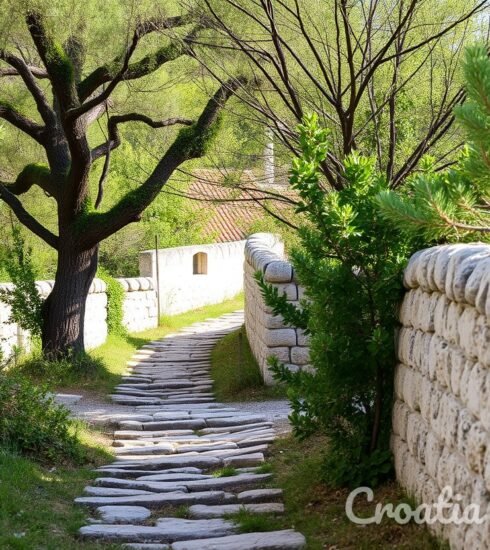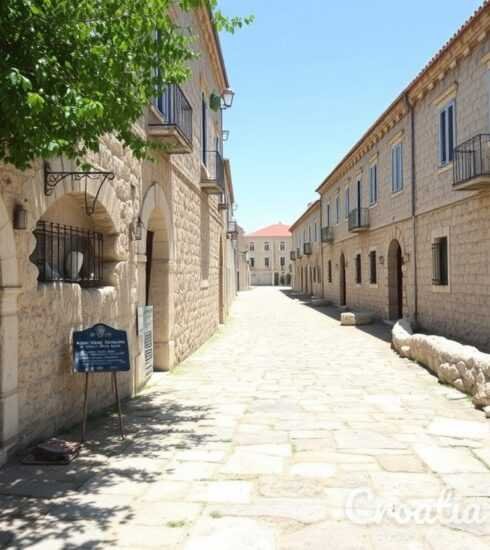Discover the Enigmatic Croatia Heritage Trails: A Journey Through Time
Whispers of the Past: Uncovering Croatia’s Enigmatic Heritage Trails
Exploring a land steeped in history, Croatia offers more than just breathtaking coastlines and stunning national parks. The croatia heritage trails are a testament to the rich tapestry of cultures that have shaped this country over centuries. Each trail tells a story, whispering secrets of ancient civilizations, medieval fortresses, and religious sanctuaries. In this comprehensive guide, we will delve into the fascinating history, notable sites, and unique experiences that await along Croatia’s heritage trails.
The Significance of Croatia’s Heritage Trails
Heritage trails represent a journey through time, allowing travelers to experience the essence of Croatia’s past while connecting with the local culture. These trails not only showcase historical landmarks but also promote sustainable tourism, providing an opportunity for communities to benefit economically from their diverse cultural heritage. Here are some key aspects that illustrate the importance of these trails:
- Cultural Preservation: The trails aid in preserving historical sites and traditions that might otherwise be lost.
- Community Engagement: Local communities are empowered to share their stories, enhancing the visitor experience.
- Sustainable Tourism: The emphasis on education ensures that tourism remains respectful and environmentally friendly.
A Glimpse into Croatia’s Rich History
To fully appreciate the croatia heritage trails, one must first understand the country’s historical backdrop. From ancient Greek and Roman influences to the Venetian and Austro-Hungarian periods, Croatia’s history is a mosaic of various cultures.
For instance, the city of Split showcases the remnants of Diocletian’s Palace, a UNESCO World Heritage site built in the 4th century. Meanwhile, cities like Dubrovnik reflect the wealth and power of the Republic of Ragusa during the Middle Ages. Such landmarks are pivotal stops on the heritage trails, narrating stories of resilience and cultural exchange.
Top Heritage Trails in Croatia
The Roman Heritage Trail
This trail highlights the influence of the Roman Empire on Croatian territories. Stretching across various regions, the trail encompasses significant Roman architecture and sites, including:
- Diocletian’s Palace: Located in Split, this vast structure is one of the most significant remnants of Roman architecture in existence.
- Pula Arena: An exceptionally preserved Roman amphitheater in Pula, known for hosting various events.
- Salona: An ancient city near Split, showcasing remnants of Roman urban planning, monuments, and early Christian basilicas.
These sites provide a vivid insight into daily life during the Roman era, making the Roman Heritage Trail a must-visit for history enthusiasts.

The Medieval Heritage Trail
Focusing on the medieval period, this trail features numerous forts, churches, and towns that date back to the Middle Ages. Some of the notable sites along this trail include:
- Dubrovnik: Known as the “Pearl of the Adriatic,” this fortified city boasts majestic walls and a rich maritime history.
- Trakošćan Castle: A 13th-century castle that has been preserved beautifully and offers stunning lake views.
- Knin Fortress: A significant historical site that played a crucial role in Croatian statehood.
Travelers will find that the Medieval Heritage Trail beautifully weaves tales of chivalry, trade, and artistry, making each stop a fascinating learning experience.
The Religious Heritage Trail
This trail dives into Croatia’s deep-rooted religious history, showcasing churches, monasteries, and pilgrimage sites that speak volumes about the spiritual heritage of the nation. Highlights include:
- The Cathedral of St. James: Located in Šibenik, this UNESCO World Heritage site is a remarkable example of Gothic architecture.
- The Sanctuary of Our Lady of Trsat: A significant pilgrimage destination close to Rijeka, offering panoramic views and a rich historical background.
- Settlements around the River Kupa: Historical towns that reflect the spiritual and communal life of past centuries.
The Religious Heritage Trail invites travelers to not only observe but also to engage with the stories that shape Croatia’s spiritual landscape.
Experiencing Croatia’s Heritage Trails
What to Expect Along the Trails
When embarking on these croatia heritage trails, visitors can expect a rich blend of culture, history, and nature. Each trail offers unique experiences involving:
- Guided Tours: Many trails provide expert guides who share in-depth knowledge about the historical significance of each site.
- Local Cuisine: Don’t miss out on sampling traditional dishes at local eateries along the way, offering a taste of the region’s culinary heritage.
- Art and Craft Activities: Engage with local artisans to learn about traditional craftsmanship that has been passed down through generations.

Preparing for Your Journey
To fully enjoy your adventure along the croatia heritage trails, consider the following tips:
- Footwear: Wear comfortable, sturdy shoes, as many trails may include uneven terrain.
- Weather: Check the weather conditions beforehand and pack accordingly, especially if you are traveling in spring or fall.
- Respect Local Customs: Be mindful of cultural etiquette, especially in sacred places.
Prominent Cultural Events
To enrich your experience, consider timing your visit to coincide with local festivals and events that celebrate cultural heritage. Examples include:
- Dubrovnik Summer Festival: Showcasing music, theater, and dance within the historic walls of the city.
- Špancirfest: A street festival in Varaždin filled with performances, art exhibits, and gastronomy.
- Feast of St. Domnius: Celebrated in Split, this festival honors the patron saint of the city’s cathedral with processions and music.
These events provide opportunities for visitors to dive even deeper into the culture of Croatia and connect with locals.
Real-World Examples of Heritage Trails in Croatia
The Via Nostra Heritage Trail
The Via Nostra Heritage Trail is a pristine example of how walking routes can serve as historical narratives. This trail connects a selection of ancient sites across the country, moving through vineyards in Slavonia to ancient fortifications in Istria. The trail encompasses:
- Wine Routes: Discovering the wine-making traditions that date back to Roman times.
- Historical Towns: Each stop along the way presents opportunities to engage with local histories and customs.
- Scenic Landscapes: The trail is designed to be as aesthetically pleasing as it is educational, weaving through picturesque countryside.
The Emerald Way

This trail takes visitors through the heart of Croatia’s natural and cultural landscapes. Stretching from the Plitvice Lakes to the Neretva Valley, the Emerald Way offers stunning vistas and plenty of historical significance. Key attractions along this route include:
- Plitvice Lakes National Park: A UNESCO World Heritage site featuring cascading lakes and diverse flora and fauna.
- Omiš: A charming town boasting medieval fortresses and beautiful rivers.
- Historical Castles: Various castles dotting the landscape offer glimpses into local legends and royal pasts.
The Emerald Way is a celebration of both culture and nature, making it a favorite for those looking to immerse themselves in Croatia’s beauty.
Planning Your Visit
Best Times to Visit Croatia
The ideal time to explore the croatia heritage trails is during the spring (April to June) and fall (September to October) seasons. During these times, temperatures are moderate, and the tourist crowds are fewer. Additionally, many cultural events and festivals are held in these months, presenting guests with unique experiences.
Summers can be hot and crowded, especially along the coast, while winters, while peaceful, may limit access to some hiking routes due to snow or weather conditions.
Resources for Further Exploration
With an abundance of information available online, several resources can enhance your travel experience:
- Visit Croatia: The official tourism board provides updated tourist information and travel tips.
- Cultural and Historical Sites: An internal resource that offers more insights into Croatia’s rich cultural landscape.
- UNESCO World Heritage in Croatia: Lists all UNESCO sites within Croatia, enhancing the historical context of your travels.
Using these resources can help travelers navigate the wealth of information available, maximizing their understanding and enjoyment while exploring Croatian heritage.
Conclusion
In traversing the croatia heritage trails, one embarks on a journey filled with discovery, learning, and connection. Each step along the trails echoes the history of a land rich with stories, beautiful landscapes, and cultural heritage. As each town and site offers its unique charm and lesson, visitors are encouraged to engage deeply with the past, ensuring that the whispers of history continue to resonate in the present.





